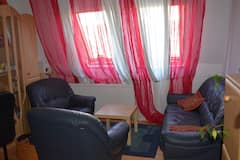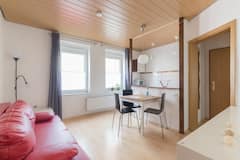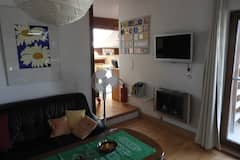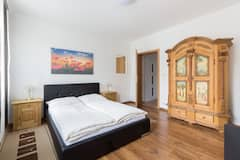A university city, Jena is a centre of education and research in Germany, in addition to a great tourist destination. With the Friedrich Schiller University and the Ernst-Abbe-Fachhochschule as educational institutions in the city, students make up most of the population. Furthermore, there are many institutes of the leading German research societies, promising a lively and rich city sure to stimulate your intellectual capacities.
1. Marvel over futuristic astrological projections on planetarium walls
The Zeiss-Planetarium is the oldest continuously operating planetarium in the world, opened on July 18, 1926. Isn’t it exciting to visit both a piece of history and an institution ahead of its time for astrological education? Inspired by Carl Zeiss, the planetarium seeks to emulate the catalytic moment when Zeiss decided to fly to Mars.
Catch the Space Rock Symphony with artists from Linkin Park to Muse. When you see the sky on a clear night, you get a sense of the infinity of the universe. You lose yourself in the glittering starry sky and feel the invisible attraction of the distance. Music has a similar effect on us. Thereby, the Space Rock Symphony takes you on a journey that starts at this point and penetrates ever deeper into fantastic worlds. Experience a modern rock tale where e-guitars, symphonic orchestras and cosmic images combine to form a fast-paced show. Let yourself be mesmerized by the most beautiful symphonic rock hits of recent decades.
Or attend the “Montagskino”, launched on the occasion of the 90th birthday of the Zeiss Planetarium on 9th June 2017. Have a great cinema experience in the viewing of “Per Anhalter durch die Galaxis,” or Hitchhiker’s Guide to the Galaxy. Otherwise, try out the ZEISS optical-mechanical and digital planetarium. With the digital dome projection “VELVET” and the unique 3D sound “SpatialSound Wave,” the projectors deliver dome-covering imagery of extremely high contrast, brightness and resolution.
The Zeiss-Planetarium
Address: Am Planetarium 5, 07743 Jena, Germany
Website: The Zeiss-Planetarium
2. Enjoy a bird's eye view of the city via the viewing platform

Want to get a skyline view of this beautiful city? Head over to the Jen-Tower, where the two observation platforms are the highest accessible levels at the Jen-Tower and are 125 meters (410 feet) above the city center. Here you can enjoy a picturesque view over the whole of Jena and watch the hustle and bustle of the city center.
For the keen photographer, you can get some great shots either over the red rooftops of Jena or of the distant countryside from the tower. After the sightseeing, feel free to explore the shopping center, New Center Jena, at the foot of the tower for a quick, refreshing drink.
Jen-Tower
Address: Leutragraben 1, 07743 Jena, Germany
Website: Jen-Tower
3. Traipse on an authentic battlefield of Napoleon, with a scenic hike up for nature lovers
The Napoleonstein is a monument to the battle of Jena and Auerstedt, fought by Napoleon. This is a must-see for Napoleon/battlefield enthusiasts. Due to its scenic location and concurrently proximate to the city, the Napoleonstein is a popular excursion destination for the Jenaer population. Do trek with the locals to enjoy the fresh air and appreciate the historical experience of being on one of Napoleon’s battlefields!
On your way to the Napoleonstein, the uphill hikes will provide you with a nice view over the city of Jena. Although slightly physically demanding with the hike being slightly less than two hours on uneven ground, it is definitely worth it for the historical and natural significance of the monument.
The Napoleonstein
Address: Napoleonstein, 07751 Jena, Germany
You might be interested in these Airbnbs!
4. Admire fascinating church architecture combined with great organ music and choir
The evangelical city church of St. Michael in Jena has been the centre of ecclesiastical life in the city for more than 750 years. Do visit the church for its regular worship sessions, held usually on Sundays, 10 am and 6 pm, during times of prayer and silence, as well as church music events. Located in the center of the city, it has a distinctive character.
Architecturally, the style of the church is a three-aisled late-Gothic hall, with an octagonal tower and a Renaissance hood. A one-hand clock is also visible far in the Saaletal. A special feature is the former procession squad, an open passage under the High Choir from the street. It is the first of the “Seven Wonders” of Jenas and served as a way for liturgical processions to the nuns of the Cistercian Monastery.
Also, do admire the most important work of art in the church, the wooden sculpture of the Angelus Jenensis. The sculpture depicts Archangel Michael with a lance, sword and dragon and originates from late Roman times. It was created in the first half of the 13th-century in a Bamberg workshop. Angelus, the angel related to Saint Michael, is one of Jena’s most important landmarks.
St. Michael (Jena)
Address: Kirchpl. 1, 07743 Jena, Germany
Website: St Michael
5. Study optical instruments from eight centuries in the Optical Museum
The museum gives a technical and cultural-historical survey of the development of optical instruments. The development of the city Jena to the centre of the optical industries since the mid-19th-century is integrated in the exhibition, connected with the lifeworks of Ernst Abbe, Carl Zeiss and Otto Schott.
Do check out the history of glasses, historical development of microscopy, telescopes and their masters or the world of images: camera obscura, peep shows and magic lanterns on the ground floor. Many more exhibitions and studies are also available! For those interested in Carl Zeiss, the Historical Zeiss-Workshop 1860 is also available. Most strikingly, the Holograph-collection is one to see!
Optical Museum
Address: Carl-Zeiss-Platz 12, 07743 Jena, Germany
Website: Optical Museum
6. Admire the botany in Jena
The Jena Botanical Garden is located on the edge of the university town of Jena, opposite the Thuringian University and state library. Part of the Institute of Special Botany at the Friedrich Schiller University of Jena, it shows about 12,000 different plants in several heated greenhouses and open spaces, and is open to the public, the university and students of all grades.
Visit the multiple greenhouses in the garden. They include a large orchid showcase, a terrarium with South American tree-climbing frogs and a simulation of a Southeast Asian river landscape with appropriate plants, fish and dunks. In the succulent greenhouse, one can see drought-adapted plants from different regions of the earth. The focus is on the numerous cacti of North and South America. Succulent plants of Australia and Madagascar as well as from the great deserts, semi-desert and dry areas of Africa are also tended to.
Most interestingly, in the evolutionary greenhouse, visitors can immerse themselves in a world gone by and get an idea of what vegetation was like before the development of modernism. In the Jura and the early Cretaceous period, the mainland was largely naked and filled with ferns. Alternatively, visit the Victoria Falls, home to the large, nutritious slow-flowing rivers of the South American tropics. In this showhouse, the number of bromeliads as typical planting plants of the Neotropics is particularly high. 50 to 100 piranhas live in the warm water under the water lily leaves.
Jena Botanical Garden
Address: Fürstengraben 26, 07743 Jena, Germany
Website: Jena Botanical Garden
7. Explore the history of Jena at the Stadtmuseum Jena
Excite your children with this guided tour detailing what Jena looked like more than 500 years ago. How did people live, were there schools, and what did they pay on the market? Visitors make a little time trip into the year 1442 and find out together the history of Jena. What has remained of the Middle Ages is explored in an interactive tour of the exhibition and the city - with ascent of the Johannistor. The ideal age group is 6-10, perfect for your kids!
Adult visitors can also tour the permanent exhibition on the spirit of Jena. The visitor is led through a timeline from the beginnings of Jena as a “pile-up of knowledge and sciences” (Goethe). Philosophers such as Reinhold, Fichte, Schelling or Hegel made Jena a “hall-Athens” in the late 18th and early 19th-centuries. This development was also made possible by a liberal spirit, which stimulated science and philosophical speculation, and political rebellion.
Stadtmuseum Jena
Address: Markt 7, 07743 Jena, Germany
Website: Stadtmuseum Jena
8. Answer biological questions about life at the Phyletisches Museum
Founded by Ernst Haeckel, the Phyletisches Museum is a globally unique institution. It is not just a natural history museum, but has been, from the start, a place dedicated to illustrating the development of life. Its main areas of focus are phylogeny and the theory of evolution, and it also celebrates the meeting of art and nature. The façade of the Art Nouveau building, itself a cultural monument, is adorned with two important terms which Haeckel coined in Jena: Ontogenie (ontogeny) and Phylogenie (phylogeny).
Check out the Medusa Hall, which takes its name from the large, colorful frescoes of cnidarians (corals, sea anemones and jellyfish) which adorn the ceiling. Alternatively, the Evolution Hall is also highly interesting. It explores important issues in evolutionary biology. Evolutionary theory and the genetic background of evolution are explained.
Phyletisches Museum
Address: Erbertstraße 1, 07743 Jena, Germany
Website: Phyletisches Museum
Jena, a place of learning and history
Given the history of the city as a university-dominated one, visitors can expect to further their intellectual capacities in Jena, with its broad array of museums and churches. Do explore this wonderful city and all it has to offer!
History
Get Trip101 in your inbox
Unsubscribe in one click. See our Privacy Policy for more information on how we use your data





























Create an account to